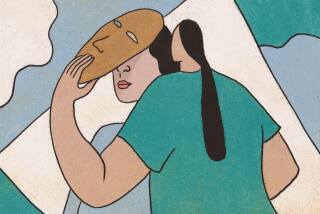This land is Big Ole’s land
- Share via
LAST WEEK in Beijing, a prominent Chinese lawyer and art collector unveiled an 18th century map that some say proves a Chinese explorer by the name of Zheng He discovered America more than 70 years before Christopher Columbus. That means that next week, Chinese grandmothers all over the United States will begin telling their grandchildren of their ancestor’s seminal role in American history.
Don’t laugh. Countless other ethnic groups have employed similar dubious facts -- and even downright fictions -- as a way of asserting their rightful place in America. Yes, the boundaries of inclusion in the United States are legally defined by citizenship. But because our national identity is based on shared abstract ideals rather than common ethnicity, many of us who are neither Native Americans nor descendants of the Mayflower can at times feel a tad bit insecure about our claims to this land. So to affirm our sense of belonging, we tie our ethnic heroes and myths into primordial moments and archetypal characters in American history.
I first encountered this phenomenon six years ago as I was driving on Interstate 94 in Minnesota. I pulled off at the town of Alexandria, which at the time had a population of 8,029. I didn’t get far down its main drag before I ran into a roughly 30-foot-tall statue of a Viking holding a spear in his right hand and a shield in his left, which read, “Alexandria, Birthplace of America.”
Just a stone’s throw from Big Ole -- which is what locals call the huge red-and-yellow Viking -- stands the Runestone Museum. It houses an array of artifacts that supposedly prove that the Vikings explored Minnesota in the 14th century, which puts them way ahead of Zheng He and Columbus. The centerpiece of the museum’s collection is the controversial Kensington Runestone, a rock with an inscription in an ancient Scandinavian script called runes that describes a massacre of 10 members of an exploration party of Swedes and Norwegians in central Minnesota in 1362. The stone was found in 1898 not far from Alexandria by Olof Ohman, a Swedish-born stonecutter who just happened to have a folk knowledge of runes.
As if to prove it was possible for the Vikings to sail from Norway to Minnesota, there is a museum in Moorhead, Minn. -- 100 miles up I-94 from Alexandria -- showcasing a Viking ship that made the voyage in the opposite direction. In 1982, a fourth-generation Norwegian American family made the 6,100-mile, 72-day trip from Duluth, on Lake Superior, to Bergen on the west coast of Norway in a 76-foot vessel modeled after a Viking ship that was unearthed in AD 900. The thing is, they had to use the Erie Canal, which wasn’t completed until 1825, to do it.
Scandinavian Americans are not the only ethnic group who think they got here first. Inspired by an Aztec legend, Mexican American activists in the late 1960s and early ‘70s maintained that the American Southwest was Aztlan, the mythical homeland of the Aztecs before they migrated southward to Tenochtitlan, modern Mexico City.
Other groups have less fantastic yet no less fervent connections to genesis moments in American history. Try telling some Italian Americans that Columbus should really be considered Spanish because he sailed under the Spanish flag. Meanwhile, some Jewish Americans claim that Columbus was really one of their own.
Clearly, early arrival here doesn’t make any one more or less American. But it has had its practical advantages. In frontier days, the U.S. government gave settlers carte blanche to violently appropriate lands that belonged to the Indians. After 1862 and before 1900, by which time most of the fertile land had been grabbed, the Homestead Act enabled immigrants to claim 160 acres of land for free. All they had to do was build a house and farm on the spot for five years and it was theirs.
Before 1882, there were no federal laws detailing who could and could not migrate to the United States, and before 1921 pretty much anyone who wasn’t a lunatic, beggar, anarchist, tubercular -- or Chinese or Japanese -- was allowed in. But our country is not as young, optimistic and, dare I say, as generous as it once was. As the Golden Door closes, the psychological need to prove one’s Americanness can only grow.
I’d like to say that my family never felt the need to cling to silly tales to prove its claim to this land, but that’s not quite true. Although my father’s Chihuahua-born mother never told me that a Mexican discovered America, she did swear that Walt Disney and Thomas Edison were, well, like us. The Disney part I never believed, but for a while I thought she may have been right about Edison. His middle name, Alva, does sound vaguely Spanish.
More to Read
Sign up for The Wild
We’ll help you find the best places to hike, bike and run, as well as the perfect silent spots for meditation and yoga.
You may occasionally receive promotional content from the Los Angeles Times.






